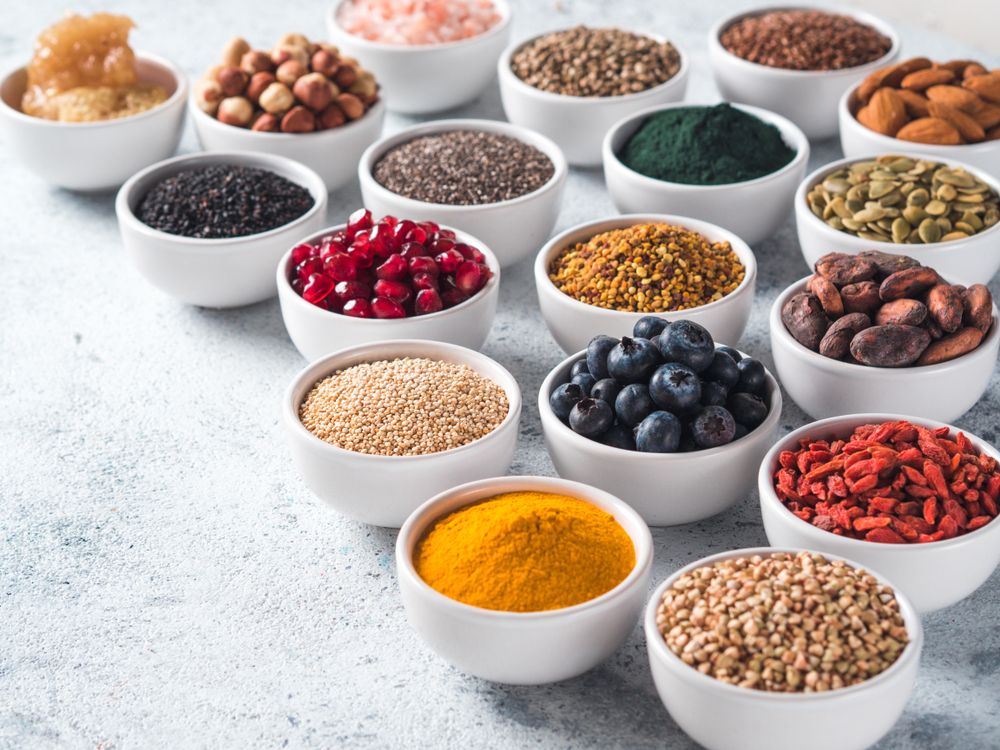When aiming to enhance metabolism, burn calories, and develop lean muscle, prioritizing protein intake is crucial. However, maintaining good health extends beyond appearance; it also involves preventing serious conditions such as diabetes and heart attacks, which are strongly correlated with dietary quality.
So, how can you elevate your protein consumption while ensuring a balanced diet, particularly if weight loss is your objective? This is where high-protein superfoods become invaluable. Superfoods, renowned for their nutritional potency, serve as allies in achieving health and fitness objectives, including the consumption of ample protein.
What puts the 'super' in superfoods?
While lacking a formal definition, the term "superfoods" generally denotes "nutrient-rich foods considered particularly advantageous for health and well-being," as elucidated by Amy Goodson, MS, RD, CSSD, LD, author of The Sports Nutrition Playbook and member of our Expert Medical Board.
While subjectively interpreted, superfoods tend to share several common traits. Goodson elaborates, stating, "Consider them as foods that offer more than mere carbohydrates, protein, fat, vitamins, or minerals; they provide additional nutritional benefits."
Goodson further illustrates, "Examples of such additional nutritional benefits include antioxidants, which combat free radicals in the body that may potentially harm our cells." She continues, "Similarly, omega-3 fatty acids serve to mitigate free radicals that induce inflammation in the body, while also aiding in raising HDL ('good' cholesterol). Hence, these are foods possessing a broader nutritional profile than essentials."
The power of high-protein superfoods
Protein emerges as a pivotal constituent of superfoods owing to its crucial functions in organ health, tissue development, and muscle regeneration. Additionally, it serves as a foundational component in the formation of bones, skin, muscles, and cartilage.
When protein's formidable properties are combined with the diverse array of vitamins and nutrients present in superfoods, it fortifies overall health in myriad remarkable ways. However, which high-protein superfoods transcend the offerings of conventional superfoods?
Continue reading to delve into some of the healthiest high-protein superfoods available, along with delectable and innovative suggestions to seamlessly incorporate them into your diet.
1) Chicken breast
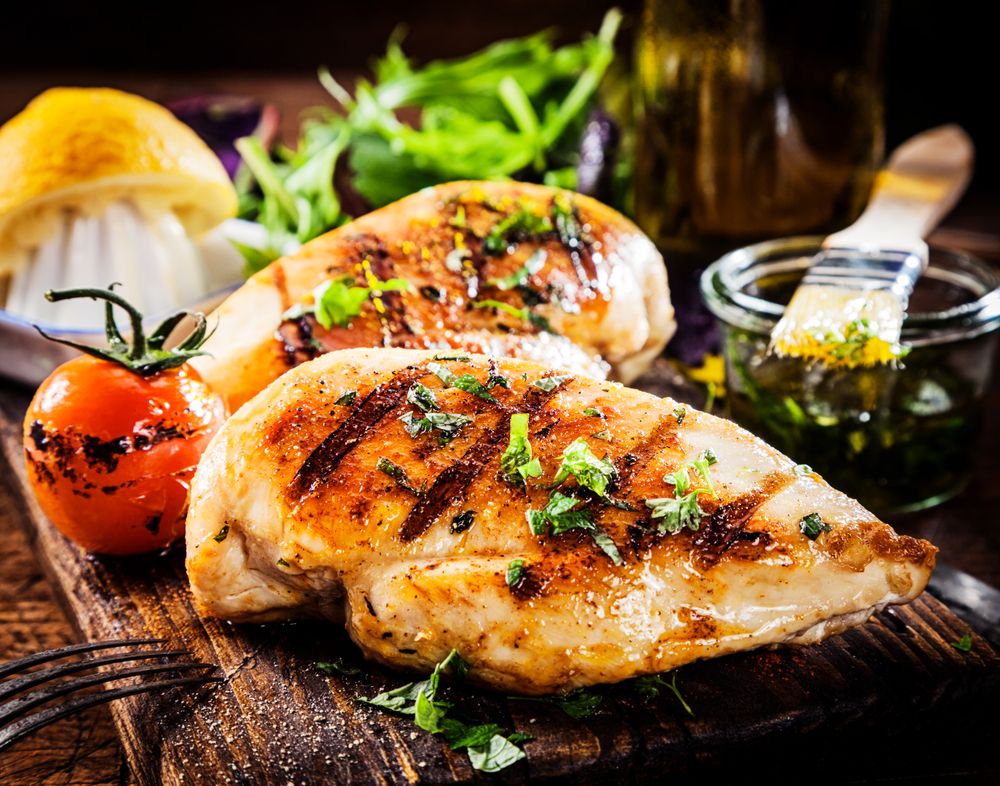
NUTRITION (PER 4 OUNCES):
- CALORIES: 120
- FAT: 1 g (Saturated Fat: 0 g)
- SODIUM: 75 mg
- CARBS: 0 g (Fiber: 0 g, Sugar: 0 g)
- PROTEIN: 26 g
What elevates this high-protein superfood to super status: While chicken breast is commonly associated with protein and low-fat content, it possesses numerous superfood qualities. Packed with niacin, selenium, vitamins B12 and B6, zinc, and potassium, chicken breast emerges as an excellent addition to a high-protein diet.
Chicken is also categorized as a "complete" protein. According to Goodson, "'Complete protein' indicates that it contains all essential amino acids that the body cannot produce on its own. This encompasses all animal-based foods/proteins, such as meat, pork, poultry, fish, dairy, and eggs."
How to savor this superfood: Chicken breast offers versatility in preparation, whether incorporated into stir-fries, casseroles, bakes, chicken salads, or air-fried for a "fried" texture. If opting for pre-sliced chicken breast from the deli, be mindful of preservatives and sodium levels commonly found in packaged chicken products.
2) Turkey
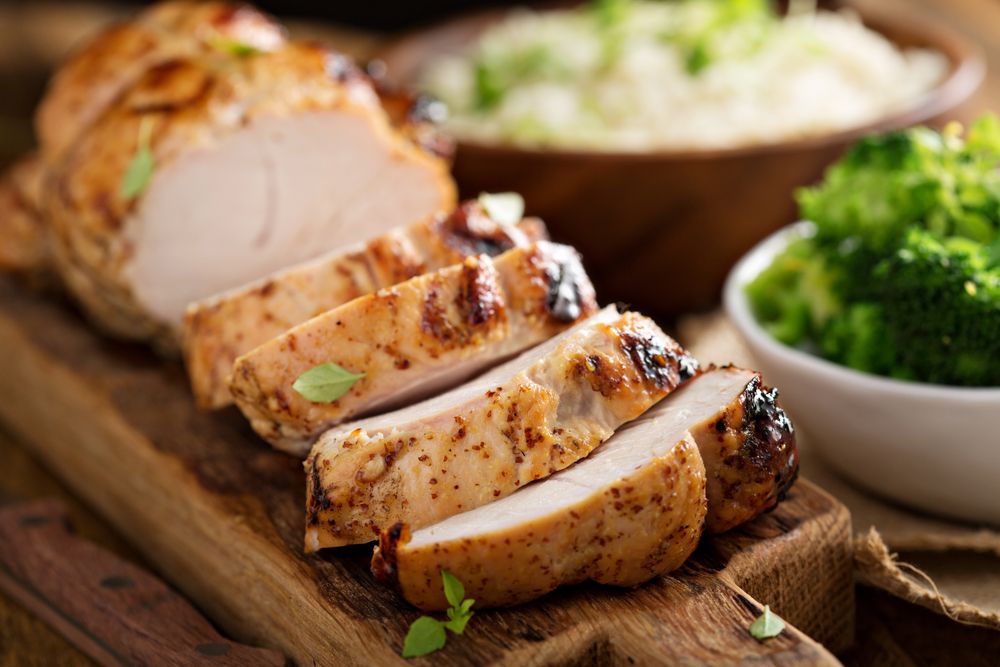
NUTRITION (PER 3 OUNCES, OF TURKEY BREAST):
- CALORIES: 125
- FAT: 1.8 g (Saturated Fat: 0.5 g)
- SODIUM: 84 mg
- CARBS: 0 g (Fiber: 0 g, Sugar: 0 g)
- PROTEIN: 25.6 g
What sets this high-protein superfood apart: Turkey, another excellent poultry option, boasts over 25 grams of protein per serving and is rich in various essential nutrients. A serving of turkey provides essential B vitamins like B3, B6, and B12, along with selenium, phosphorus, zinc, and magnesium—key components for maintaining a balanced, healthy diet.
How to incorporate this superfood into your meals: Turkey breast can be enjoyed in sandwiches, casseroles, or ground turkey in soups, scrambles, burgers, and pasta dishes like Turkey Bolognese. When purchasing pre-sliced turkey, it's advisable to monitor sodium levels and check for preservatives, similar to shopping for pre-sliced chicken breast.
3) Tofu

NUTRITION (PER 3 OUNCES):
- CALORIES: 71
- FAT: 3.5 g (Saturated Fat: 0.6 g)
- SODIUM: 0.6 mg
- CARBS: 0.8 g (Fiber: 0.8 g, Sugar: 0.3 g)
- PROTEIN: 9.1 g
What distinguishes this high-protein superfood: Tofu stands out as a high-protein superfood, particularly suitable for plant-based diets. Aside from its notable 9 grams of protein per serving, tofu is classified as a complete protein, supplying all nine essential amino acids crucial for bodily functions. Additionally, tofu is rich in nutrients, offering approximately 50% of the daily value of both calcium and manganese in a single serving, along with moderate levels of selenium, iron, zinc, and vitamin A.
How to incorporate this superfood into your meals: There are numerous ways to include tofu in your diet. You can bake it, stir-fry it, add it to scrambles, or blend it into smoothies for a creamy texture and protein boost.
4) Walnuts

NUTRITION (PER 1 OUNCE):
- CALORIES: 185
- FAT: 18.5 g (Saturated Fat: 1.7 g)
- SODIUM: 0.6 mg
- CARBS: 3.9 g (Fiber: 1.9 g, Sugar: 0.7 g)
- PROTEIN: 4.3 g
What makes this high-protein superfood stand out: Walnuts boast over 4 grams of protein per 1-ounce serving, but their true superpower lies in their healthy fat content. These nuts are abundant in omega-3 fatty acids, particularly ALA, the plant-based type of omega-3s. According to the National Institutes of Health, a serving of walnuts fulfills the daily recommended ALA intake.
In addition to their protein and healthy fats, walnuts are packed with antioxidants like vitamin E and polyphenols.
How to incorporate this superfood into your diet: Enjoy a handful of walnuts as a nutritious snack on their own, or sprinkle them over your morning yogurt or high-protein oatmeal for added flavor and texture.
5) Tuna
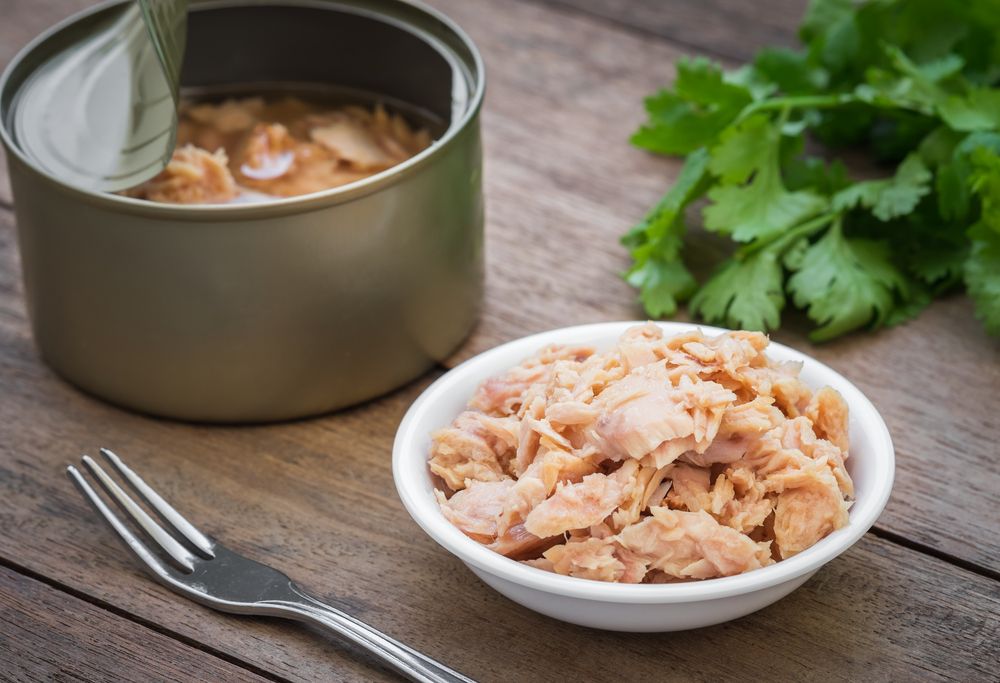
NUTRITION (PER 3 OUNCES, CANNED, DRAINED):
- CALORIES: 109
- FAT: 2.5 g (Saturated Fat: 0.7 g)
- SODIUM: 320 mg
- CARBS: 0 g (Fiber: 0 g, Sugar: 0 g)
- PROTEIN: 20.1 g
What sets this high-protein superfood apart: Canned tuna is renowned for its protein content, offering around 20 grams per serving. Beyond protein, tuna is rich in omega-3 fatty acids, essential for maintaining eye, heart, and brain health. Additionally, tuna provides a notable amount of selenium, known to bolster immunity and support thyroid function.
How to incorporate this superfood into your meals: Canned tuna can be utilized in various dishes, such as tuna salads, sushi bakes, noodles, and casseroles. However, it's important to be mindful of mercury levels in canned tuna, with certain types like albacore and bluefin tuna carrying higher risks of mercury contamination.
6) Eggs
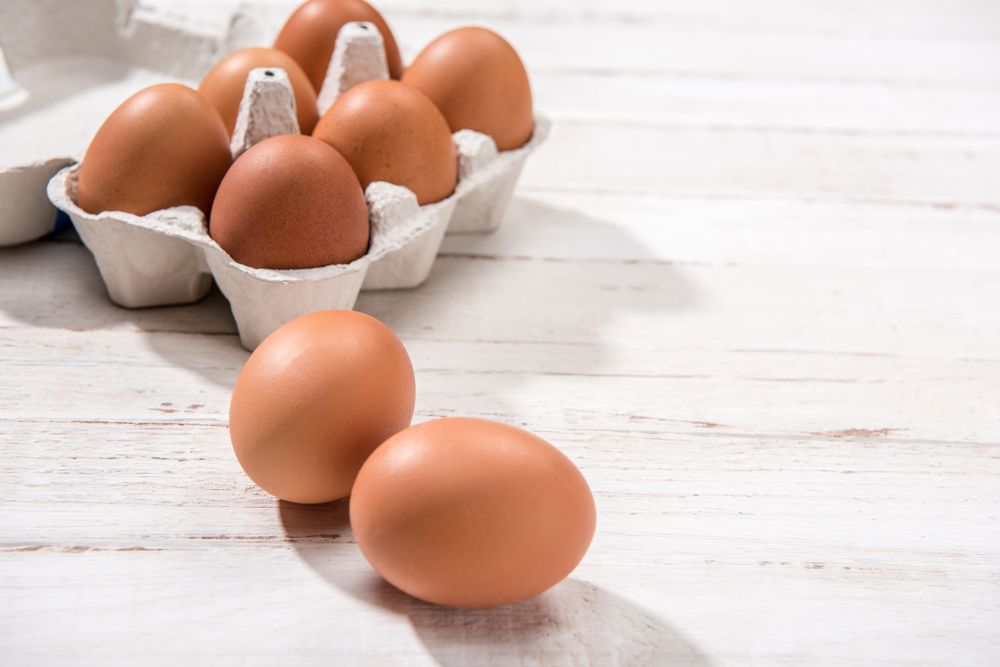
NUTRITION (PER LARGE EGG):
- CALORIES: 71.8
- FAT: 4.6 g (Saturated Fat: 1.6 g)
- SODIUM: 71 mg
- CARBS: 0.4 g (Fiber: 0 g, Sugar: 0.2 g)
- PROTEIN: 6.3 g
What makes this high-protein superfood so super: With 6 grams of high-quality protein and a rich profile of over a dozen vitamins and minerals, eggs are a standout superfood. They contain essential nutrients like choline, selenium, and vitamin D, along with antioxidants, contributing to overall health and well-being.
"Eggs provide choline, a vital nutrient for brain health, including memory, cognition, and mood regulation," highlights Goodson. "They also contain lutein and zeaxanthin, beneficial for eye health and protection against blue light emitted from screens."
How to enjoy this superfood: Whether scrambled, poached, or in an omelet, eggs offer endless culinary possibilities. Enhance their nutritional value by pairing them with vegetables and whole-grain toast.
7) Pistachios
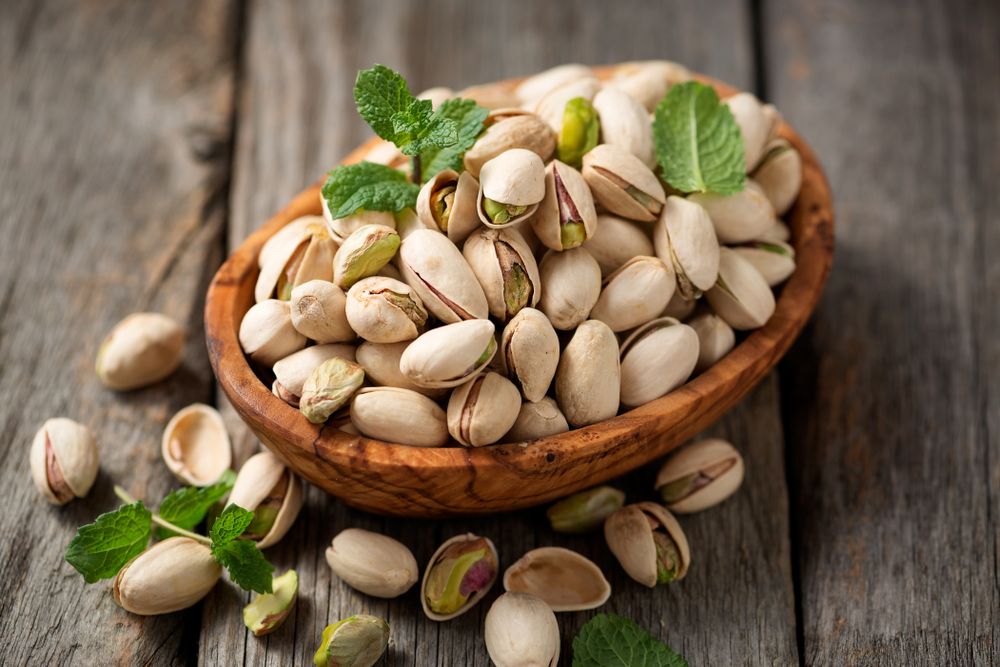
NUTRITION (PER 1 OUNCE):
- CALORIES: 159
- FAT: 12.8 g (Saturated Fat: 1.7 g)
- SODIUM: 0.3 mg
- CARBS: 7.7 g (Fiber: 3 g, Sugar: 2.2 g)
- PROTEIN: 5.7 g
What makes this high-protein superfood so super: Pistachios are not only a rich source of protein but also boast antioxidants, fiber, and phytonutrients. Lauren Manaker, MS, RDN, highlights their anti-inflammatory properties and their potential benefits for cognitive function, blood pressure, diabetes, cardiovascular health, and even cancer prevention.
How to enjoy this superfood: Enjoy pistachios as a savory and satisfying high-protein snack on their own or mixed with dried fruits and other nuts for a nutritious trail mix.
8) Lean beef
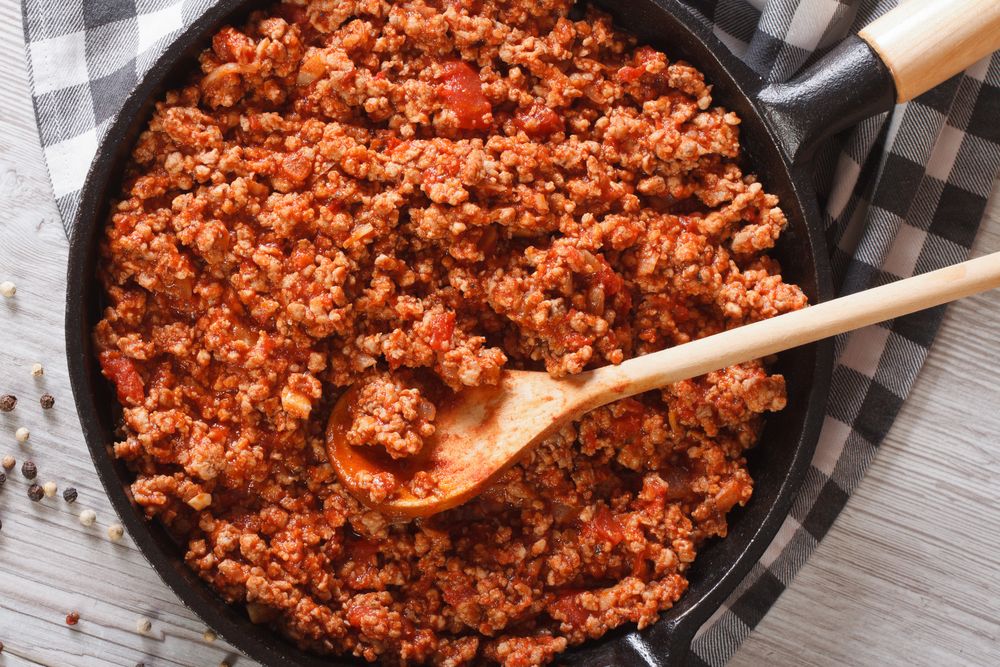
NUTRITION (PER 4 OUNCES, 93% LEAN GROUND BEEF):
- CALORIES: 172
- FAT: 7.9 g (Saturated Fat: 3.6 g)
- SODIUM: 74.6 mg
- CARBS: 0 g (Fiber: 0 g, Sugar: 0 g)
- PROTEIN: 23.5 g
What makes this high-protein superfood so super: Lean ground beef stands out as a rich source of zinc and iron, vital nutrients often lacking in many diets. Its highly absorbable protein content further enhances its nutritional value.
In addition to being a protein powerhouse, beef provides essential nutrients like selenium, known for its antioxidant properties. It's also a significant source of vitamin B12, zinc, iron, niacin, and vitamin B6, with beef being particularly important for obtaining vitamin B12, primarily found in animal foods.
How to enjoy this superfood: Incorporate lean ground beef into your meals for a flavorful protein boost. From classic tacos to hearty chili, there are endless delicious ways to enjoy this high-protein superfood.
9) Lentils

NUTRITION (PER 1/2 CUP, COOKED):
- CALORIES: 115
- FAT: 0.4 g (Saturated Fat: 0.1 g)
- SODIUM: 2 mg
- CARBS: 19.9 g (Fiber: 7.8 g, Sugar: 1.8 g)
- PROTEIN: 9 g
What makes this high-protein superfood so super: Lentils, boasting 9 grams of protein per serving, are an exceptional high-protein superfood. Their notable fiber content not only aids in digestion but also contributes to overall digestive health. Additionally, lentils are low in sodium and saturated fat, and they contain polyphenols known for their antioxidant properties.
How to enjoy this superfood: Lentils can be enjoyed in various dishes, from hearty soups and stews to flavorful salads and pilafs. Their versatility makes them a fantastic addition to any meal.
10) Salmon
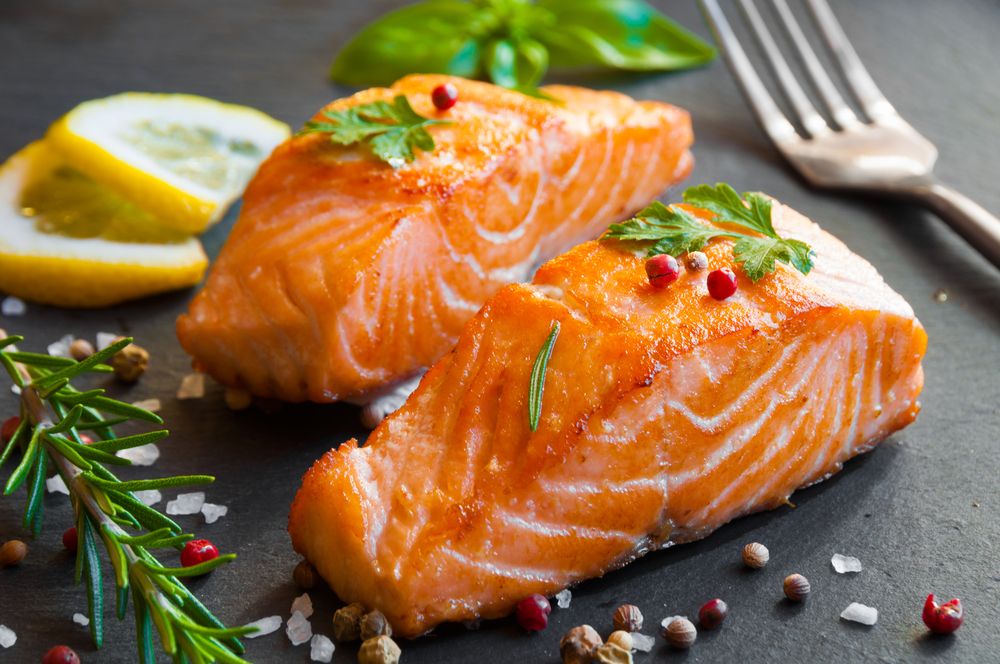
NUTRITION (PER 3 OUNCE, WILD):
- CALORIES: 121
- FAT: 5.4 g (Saturated Fat: 0.8 g)
- SODIUM: 37.4 mg
- CARBS: 0 g (Fiber: 0 g, Sugar: 0 g)
- PROTEIN: 16.8 g
What makes this high-protein superfood so super: Salmon is an exemplary high-protein superfood, providing not only a substantial 16.8 grams of protein per 3-ounce serving but also essential nutrients and healthy fats. Rich in omega-3 fatty acids, salmon promotes heart health and offers a wealth of micronutrients crucial for overall well-being.
"Incorporating salmon into your diet is a must," says Dani Lebovitz, MS, RDN, emphasizing its protein content, omega-3 fatty acids, and abundance of B vitamins essential for energy production. Furthermore, salmon stands out as an excellent source of vitamin D and selenium, enhancing its superfood status.
How to enjoy this superfood: For a nutritious dinner featuring this high-protein superfood, consider trying Roast Salmon with Lentils, a delightful dish that combines the goodness of salmon with the nutritional benefits of lentils.
11) Black beans
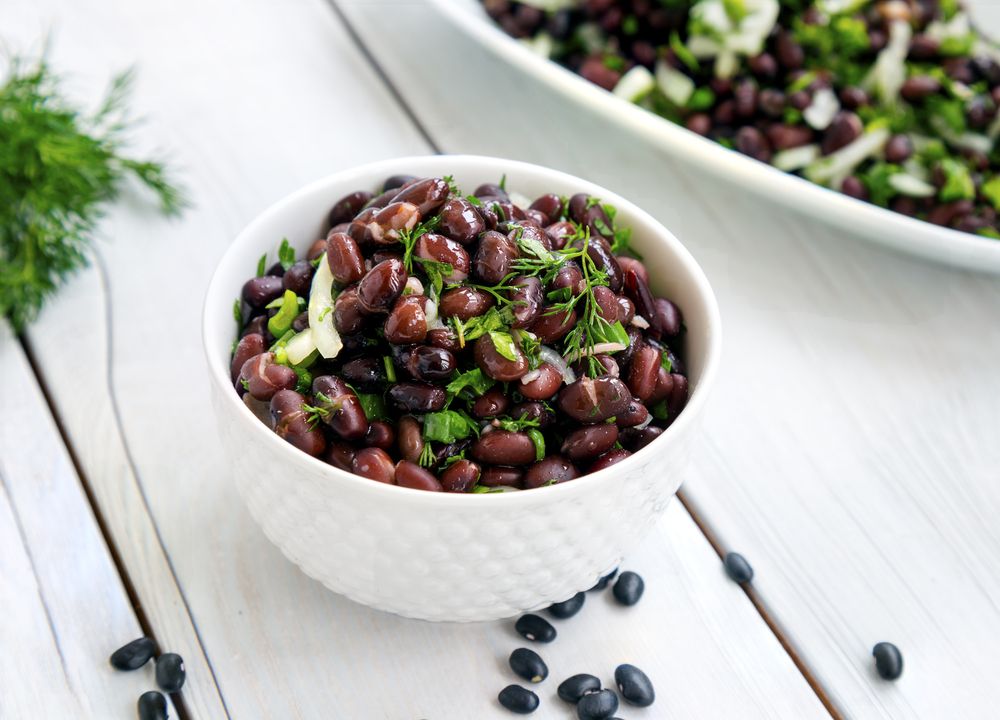
NUTRITION (PER 1/2 CUP, CANNED WITH SALT):
- CALORIES: 109
- FAT: 0.35 g (Saturated Fat: 0.1 g)
- SODIUM: 461 mg
- CARBS: 19.9 g (Fiber: 8.3 g, Sugar: 0.3 g)
- PROTEIN: 7.3 g
What makes this high-protein superfood so super is that beans stand out for their impressive protein content and superfood profile. They contribute to heart health by providing fiber and potassium. Moreover, black beans boast anthocyanins, compounds with antioxidant properties, enhancing their nutritional value, notes registered dietitian Amanda Sauceda, MS, RD.
12) Kamut
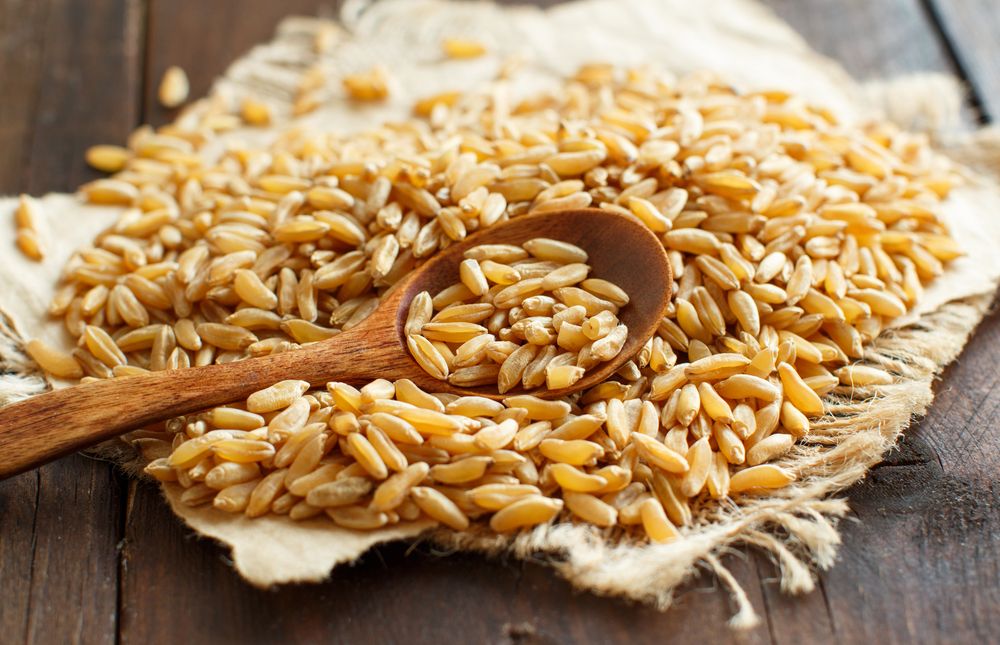
NUTRITION (PER 1/2 CUP, COOKED):
- CALORIES: 113.5
- FAT: 0.7 g (Saturated Fat: 0.1 g)
- SODIUM: 6.9 mg
- CARBS: 23.8 g (Fiber: 3.7 g, Sugar: 2.6 g)
- PROTEIN: 4.9 g
What makes this high-protein superfood so super: Kamut, with its buttery, nutty flavor, packs a punch not only in protein but also in selenium, amino acids, and vitamin E. According to a study in the European Journal of Clinical Nutrition, kamut consumption may contribute to reducing blood sugar, LDL (or "bad" cholesterol), and cytokines, which are inflammatory compounds.
How to enjoy this superfood: Kamut's versatility makes it an ideal base for various flavors. Try a wholesome kamut pilaf infused with kale, roasted pumpkin seeds, and roasted squash for a satisfying and nutritious meal.
13) Chickpeas
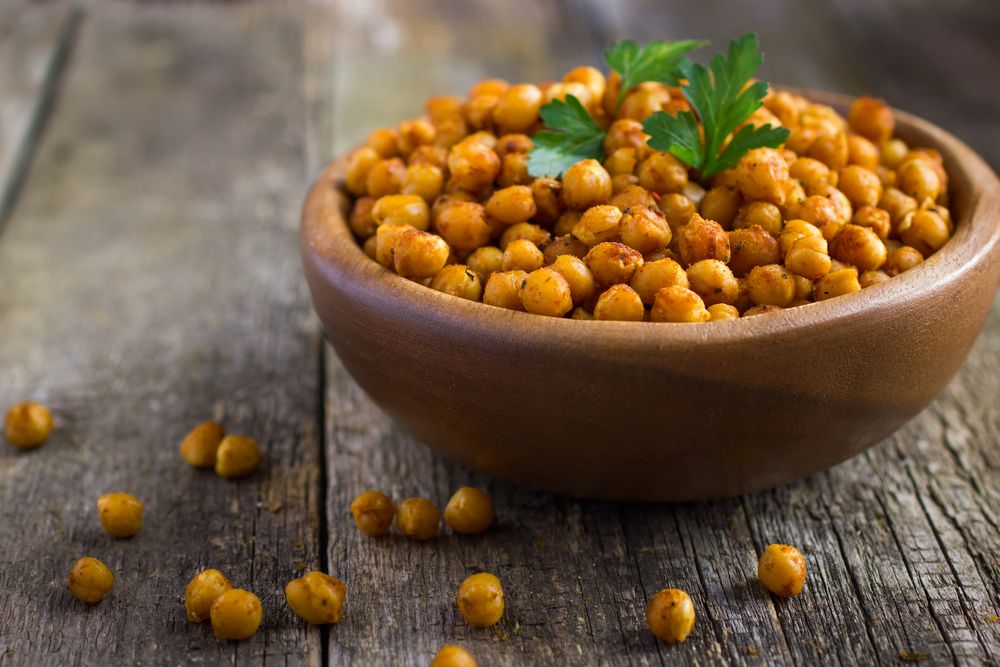
NUTRITION (PER 1/2 CUP, CANNED):
- CALORIES: 134.5
- FAT: 2.2 g (Saturated Fat: 0.2 g)
- SODIUM: 5.8 mg
- CARBS: 22.5 g (Fiber: 6.3 g, Sugar: 3.9 g)
- PROTEIN: 7.3 g
What makes this high-protein superfood so super: Chickpeas, this protein-rich superfood, are packed with folate, fiber, iron, magnesium, manganese, and phosphorus, along with a plethora of other vitamins and minerals. Additionally, chickpeas are classified as a complete protein as they contain all nine essential amino acids crucial for our bodies, which cannot be synthesized independently.
How to enjoy this superfood: Indulge in a delectable Mediterranean-inspired dish featuring grilled salmon paired with Chermoula Chickpeas, a flavorful and nutritious high-protein superfood feast.
14) Cottage cheese
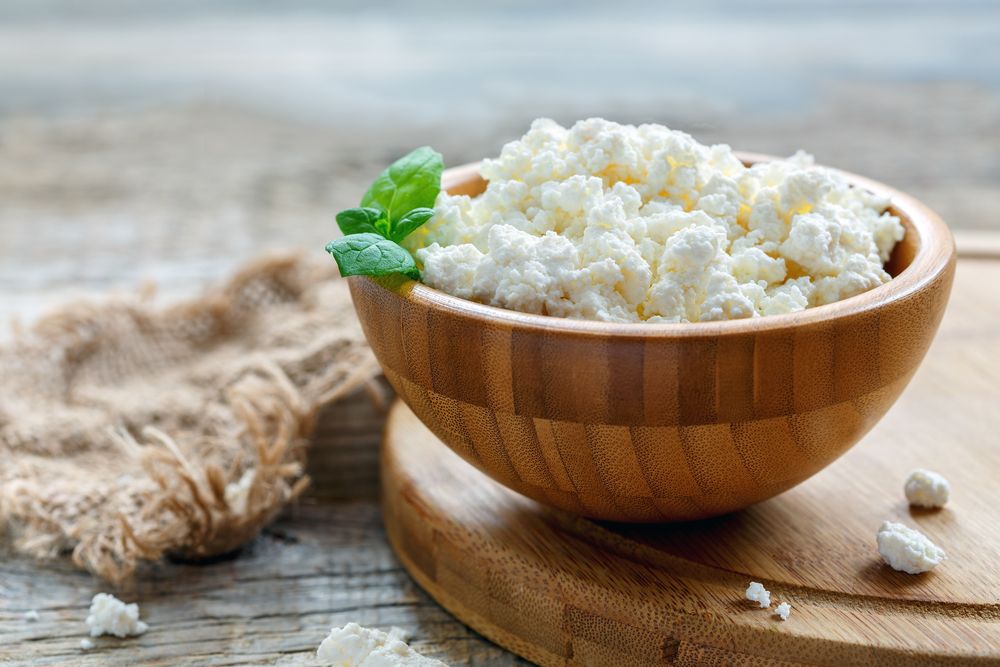
NUTRITION (PER 4 OUNCE, 1% MILK FAT):
- CALORIES: 81.4
- FAT: 1.2 g (Saturated Fat: 0.7 g)
- SODIUM: 459 mg
- CARBS: 3 g (Fiber: 0 g, Sugar: 3 g)
- PROTEIN: 14 g
What makes this high-protein superfood so super: Cultured cottage cheese emerges as a protein powerhouse superfood. Naturally abundant in protein, cottage cheese becomes even more beneficial when cultured. Cultured cottage cheese contains live and active cultures, providing probiotics that support gut health and beyond.
How to enjoy this superfood: Elevate your breakfast routine by opting for a high-protein superfood stack featuring cottage cheese. Blend cottage cheese with Greek yogurt, bananas, and whole wheat flour for a nutritious twist on classic pancakes.
15) Quinoa
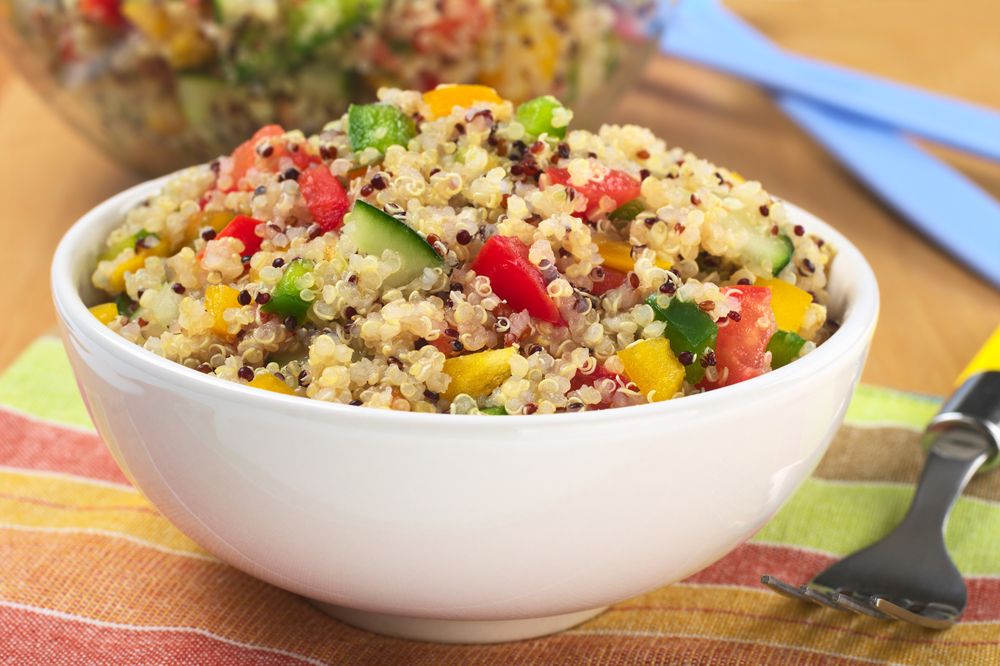
NUTRITION (PER 1 CUP, COOKED):
- CALORIES: 222
- FAT: 3.6 g (Saturated Fat: 0.4 g)
- SODIUM: 13 mg
- CARBS: 39.4 g (Fiber: 5.2 g, Sugar: 1.6 g)
- PROTEIN: 8.1 g
What makes this high-protein superfood so super: Quinoa stands out as a high-protein superfood for several reasons. Similar to chickpeas, it contains all nine essential amino acids necessary for bodily functions, making it a complete protein. Additionally, quinoa is rich in manganese, phosphorus, vitamin B1, folate, and magnesium, supporting energy production, muscle function, blood pressure regulation, and blood sugar management.
How to enjoy this superfood: For a satisfying and nutritious lunch, consider preparing a salad featuring quinoa along with other superfoods.
16) Amaranth
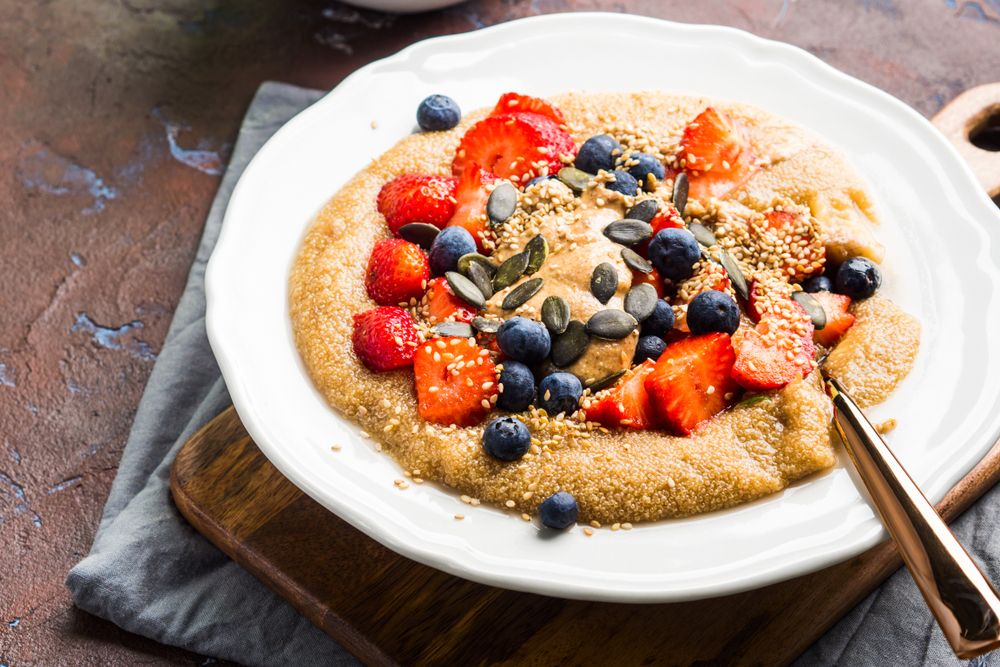
NUTRITION (PER 1/2 CUP, COOKED):
- CALORIES: 125
- FAT: 1.9 g (Saturated Fat: 0 g)
- SODIUM: 7.4 mg
- CARBS: 23 g (Fiber: 2.6 g, Sugar: 0 g)
- PROTEIN: 4.7 g
What makes this high-protein superfood so super: Amaranth, whether incorporated into savory pilaf or sweet porridge, is a nutritional powerhouse. This high-protein grain is rich in essential vitamins and minerals such as magnesium, calcium, potassium, phosphorus, iron, manganese, and immune-boosting zinc. Notably, amaranth surpasses brown rice and wheat in both fiber and protein content. Studies indicate its antioxidant properties contribute to lowering blood pressure and reducing "bad" LDL cholesterol.
How to enjoy this superfood: Elevate your breakfast routine with amaranth porridge, a more nutritious alternative to oatmeal. Enhance its flavor and texture by pairing it with a variety of fruits and nuts. For added protein and creaminess, consider stirring in a spoonful of nut butter.
17) Chia seeds
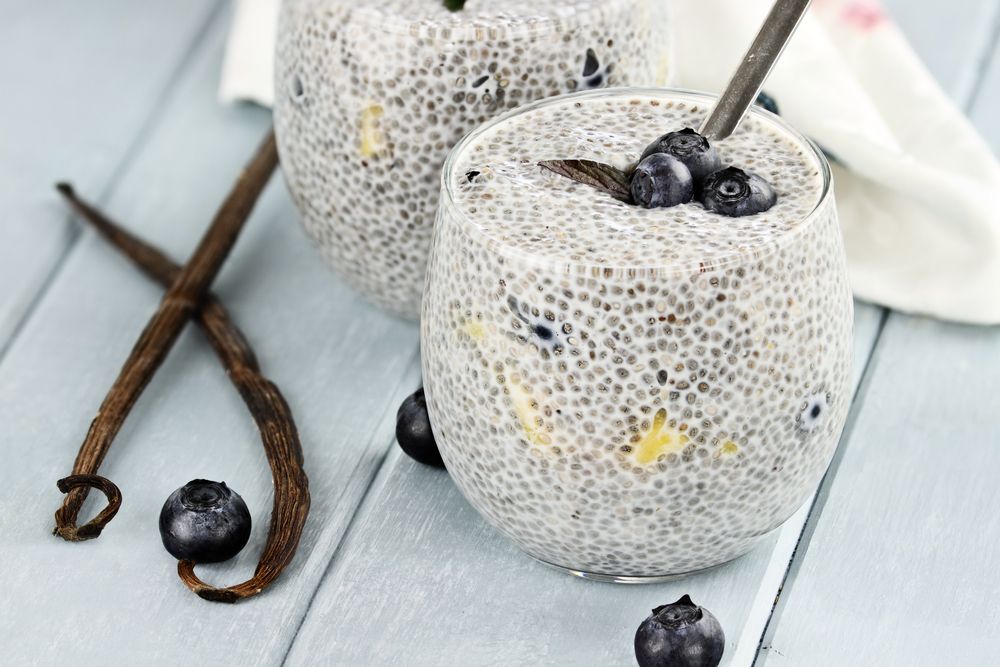
NUTRITION (PER 1 OUNCE):
- CALORIES: 138
- FAT: 8.7 g (Saturated Fat: 0.9 g)
- SODIUM: 4.5 mg
- CARBS: 12 g (Fiber: 9.6 g, Sugar: 0 g)
- PROTEIN: 4.7 g
What makes this high-protein superfood so super: Chia seeds boast nearly 5 grams of protein per 2 tablespoons, along with a potent dose of omega-3 fatty acids, antioxidants, vitamins, and minerals, all of which combat inflammation, says Lebovitz.
Moushumi Mukherjee MS RDN highlights chia seeds' impressive nutritional profile, noting that 100 grams contain 16.5 grams of protein, making them an excellent source of fiber, calcium, magnesium, and omega-3s. With all nine essential amino acids, chia seeds are an ideal vegetarian protein source. They also promote satiety, aid in weight loss, improve blood sugar control, and boost fiber intake.
How to enjoy this superfood: Incorporate chia seeds into smoothies, puddings, or baked goods for a protein-packed boost, recommends Lebovitz.
18) Pumpkin seeds
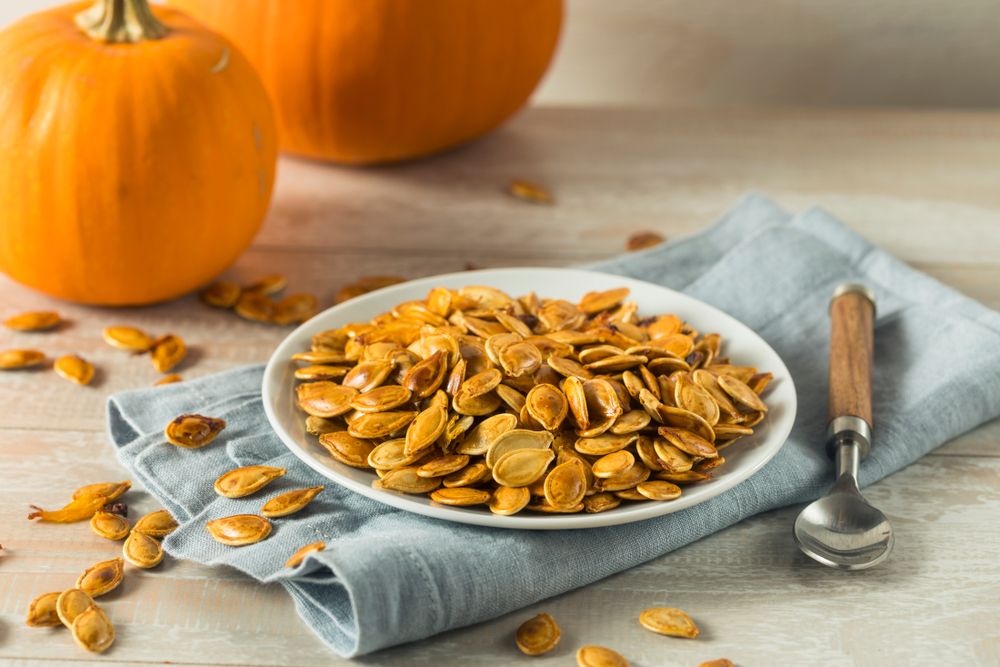
NUTRITION (PER 1 OUNCE):
- CALORIES: 163
- FAT: 14 g (Saturated Fat: 2.4 g)
- SODIUM: 5 mg
- CARBS: 4.2 g (Fiber: 1.8 g, Sugar: 0.4 g)
- PROTEIN: 8.5 g
What makes this high-protein superfood so super: Pumpkin seeds boast not only high protein content but also significant levels of iron, potassium, phosphorus, magnesium, and zinc. Scientific research suggests that they possess antioxidant, anti-inflammatory, antimicrobial, and anticancer properties.
How to enjoy this superfood: Enhance your salads with a nutritious crunch by swapping croutons for roasted pumpkin seeds. Alternatively, savor them as a satisfying snack straight from the handful.
19) Tempeh
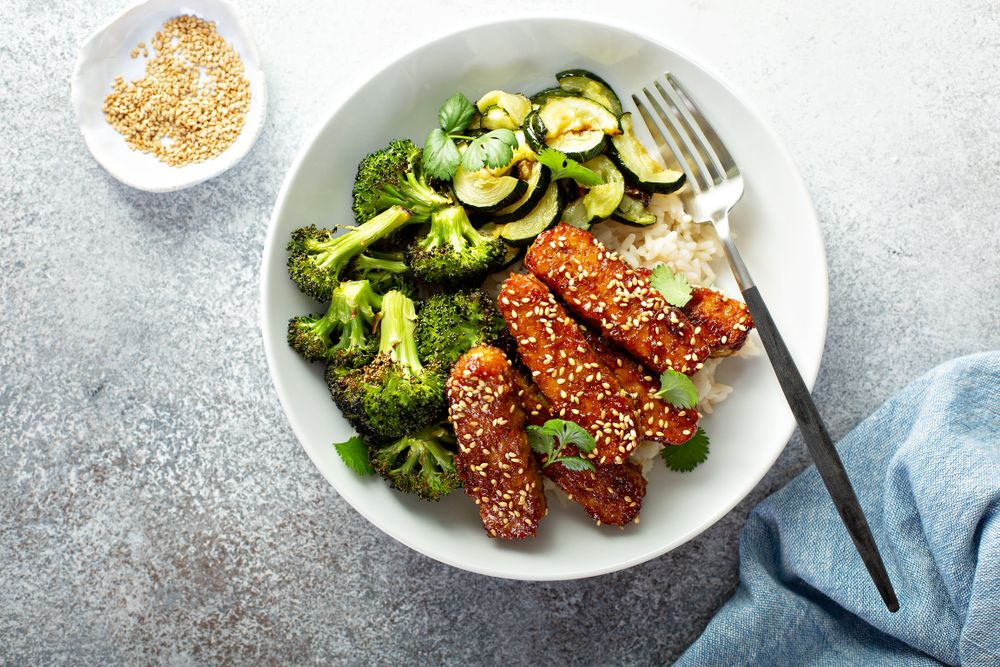
NUTRITION (PER 85 GRAMS):
- CALORIES: 140
- FAT: 3.5 g (Saturated Fat: 0 g)
- SODIUM: 340 mg
- CARBS: 14 g (Fiber: 5 g, Sugar: 3 g)
- PROTEIN: 11 g
What makes this high-protein superfood so super: Tempeh, a minimally processed fermented soy product, packs a punch with its nutrient density, high fiber, and low saturated fat content. Rich in B vitamins like folate, and minerals such as calcium and magnesium, soy-based tempeh has also been associated with a reduced risk of certain cancers, according to studies.
How to enjoy this superfood: Tempeh's neutral taste makes it a perfect base for bold flavors. Marinate it in a combination of sweet, smoky, and savory ingredients to create a delicious, crispy alternative to bacon, or incorporate it into stir-fries, salads, or sandwiches for a plant-based protein boost.
20) Edamame
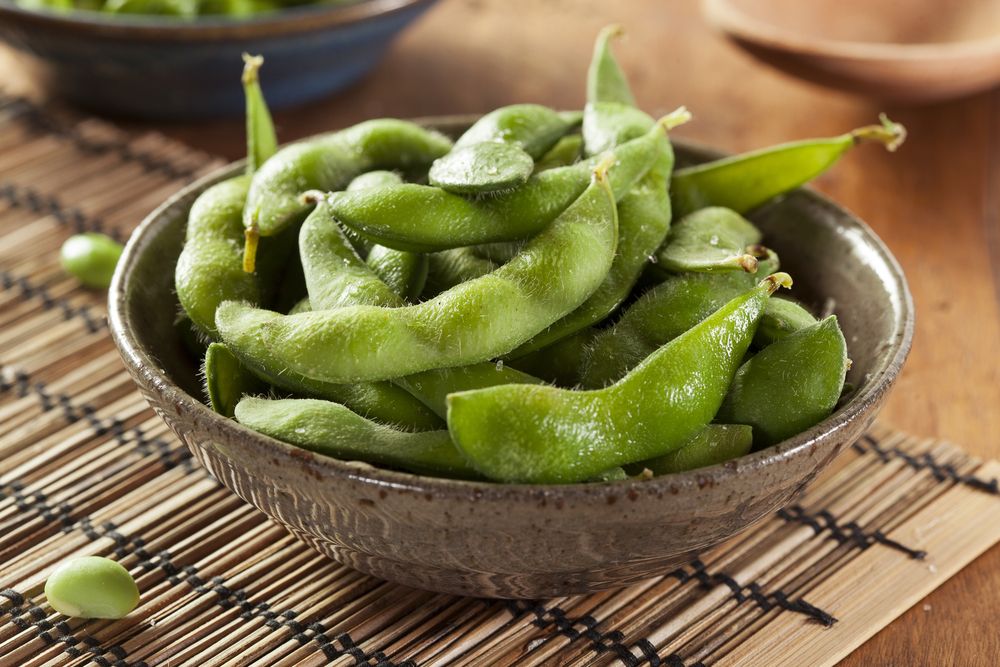
NUTRITION (PER 1/2 CUP):
- CALORIES: 94
- FAT: 4 g (Saturated Fat: 0.5 g)
- SODIUM: 4.7 mg
- CARBS: 6.9 g (Fiber: 4 g, Sugar: 1.7 g)
- PROTEIN: 9.2 g
What makes this high-protein superfood so super: These immature soybeans, known as edamame, boast an impressive nutritional profile. Not only are they rich in protein, but they also serve as a complete protein, containing all nine essential amino acids. Additionally, they are abundant in vitamin K, iron, calcium, potassium, magnesium, fiber, and antioxidants. Research suggests that edamame may contribute to lowering LDL cholesterol, regulating blood sugar levels, reducing the risk of certain cancers, and even managing menopausal symptoms.
How to enjoy this superfood: Enjoy edamame steamed or roasted for a crunchy and nutritious snack option, suggests Stevens.
21) Bone broth
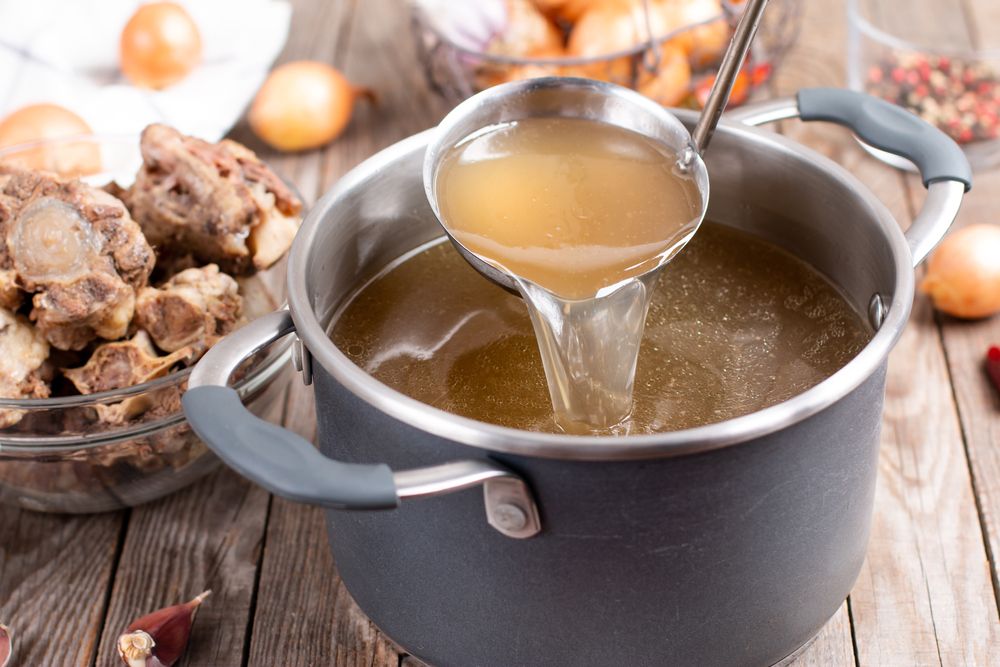
NUTRITION (PER 8 OUNCES):
- CALORIES: 121
- FAT: 7 g (Saturated Fat: 2 g)
- SODIUM: 391 mg
- CARBS: 4 g (Fiber: 0.9 g, Sugar: 0.9 g)
- PROTEIN: 9 g
What makes this high-protein superfood so super: Bone broth is hailed as a high-protein superfood, offering specific amino acids and nutrients associated with reduced inflammation, improved gut health, and alleviation of joint pain, according to Bianca Tamburello, RDN. Moreover, the collagen and amino acids found in bone broth may enhance skin elasticity and moisture, leading to a natural glow, while also promoting better sleep.
How to enjoy this superfood: Tamburello recommends Azuluna Farms Chicken Bone Broth for its pasture-raised quality and remarkable nutritional content, boasting 14 grams of protein and 8 grams of collagen per 8-ounce serving.
22) Almonds
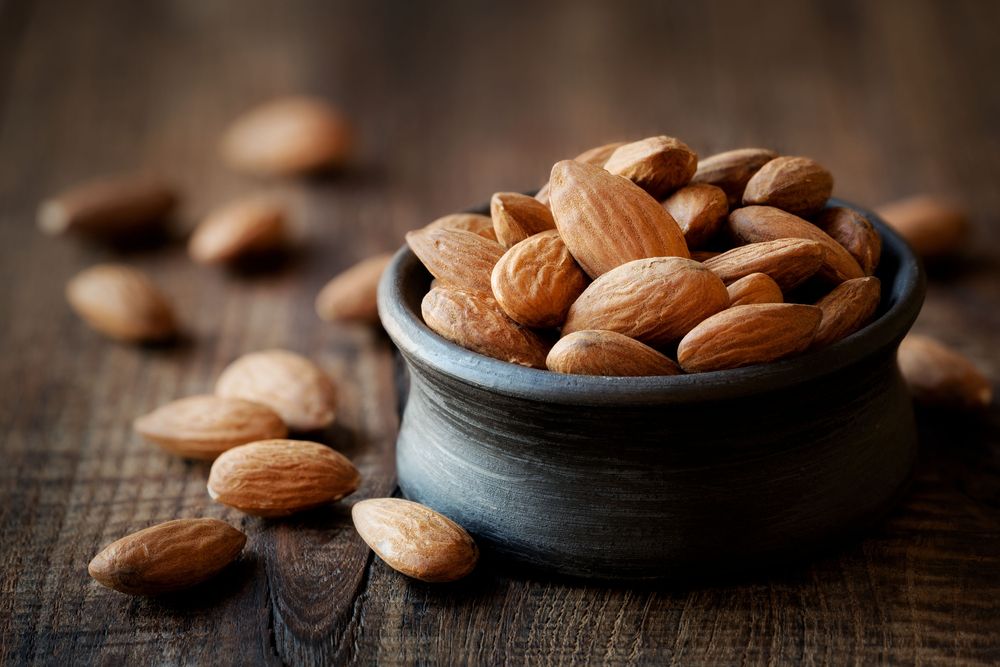
NUTRITION (PER 1 OUNCE):
- CALORIES: 164
- FAT: 14.1 g (Saturated Fat: 1 g)
- SODIUM: 0.3 mg
- CARBS: 6.1 g (Fiber: 3.5 g, Sugar: 1.2 g)
- PROTEIN: 6 g
What makes this high-protein superfood so super: Almonds may be small in size, but they pack a powerful punch of protein. Beyond their protein content, almonds boast an impressive array of antioxidants, healthy fats, vitamins, and minerals, including B2, fiber, manganese, and magnesium. Research suggests that these nutrients may contribute to reducing the risk of Alzheimer's, cancer, and heart disease, while also promoting healthy blood sugar and blood pressure levels. As a filling and nutrient-dense snack, almonds can even aid in calorie reduction.
How to enjoy this superfood: Elevate the texture of your oatmeal or amaranth porridge by incorporating a handful of almonds. They also serve as an excellent crunchy, gluten-free topping for salads instead of pita chips or croutons. Additionally, for a delectable yet nutritious dessert featuring almonds.
23) Yogurt
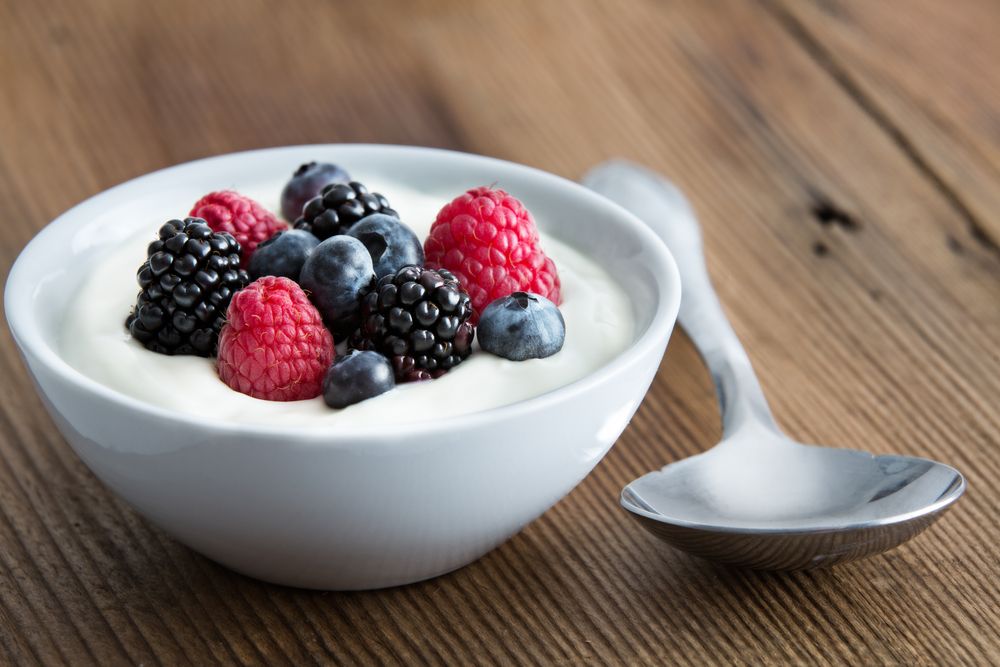
NUTRITION (PER 7-OUNCE CONTAINER, GREEK NONFAT YOGURT):
- CALORIES: 146
- FAT: 3.8 g (Saturated Fat: 2.5 g)
- SODIUM: 68 mg
- CARBS: 7.9 g (Fiber: 0 g, Sugar: 7.1 g)
- PROTEIN: 20 g
What makes this high-protein superfood so super: Greek nonfat yogurt is a powerhouse of protein, providing around 20 grams per 7-ounce serving, with minimal fat content. Additionally, yogurt is rich in probiotics, beneficial bacteria that support gut health and aid digestion. These live cultures have been linked to reducing digestive discomfort such as gas and bloating.
How to enjoy this superfood: Incorporate Greek nonfat yogurt into your daily routine by adding it to smoothies for a creamy texture and added protein boost. Alternatively, create a parfait by layering yogurt with fruits and nuts for a nutritious and satisfying snack. Experiment with flavor combinations to find your favorite.
24) Milk, 1%

NUTRITION (PER 1 CUP):
- CALORIES: 105
- FAT: 2 g (Saturated Fat: 1 g)
- SODIUM: 127 mg
- CARBS: 12 g (Fiber: 0 g, Sugar: 12 g)
- PROTEIN: 8.5 g
What makes this high-protein superfood so super: Milk is not only a rich source of protein but also a powerhouse of essential nutrients like bone-strengthening calcium, vitamin D (when fortified), B vitamins, phosphorus, and potassium.
How to enjoy this superfood: Incorporate milk into your diet by using it in smoothies for added creaminess and protein. For a nutritious and vibrant breakfast, try pouring milk over a warm muesli bowl topped with blueberries, shaved coconut, and roasted pumpkin seeds.
25) Black-eyed peas
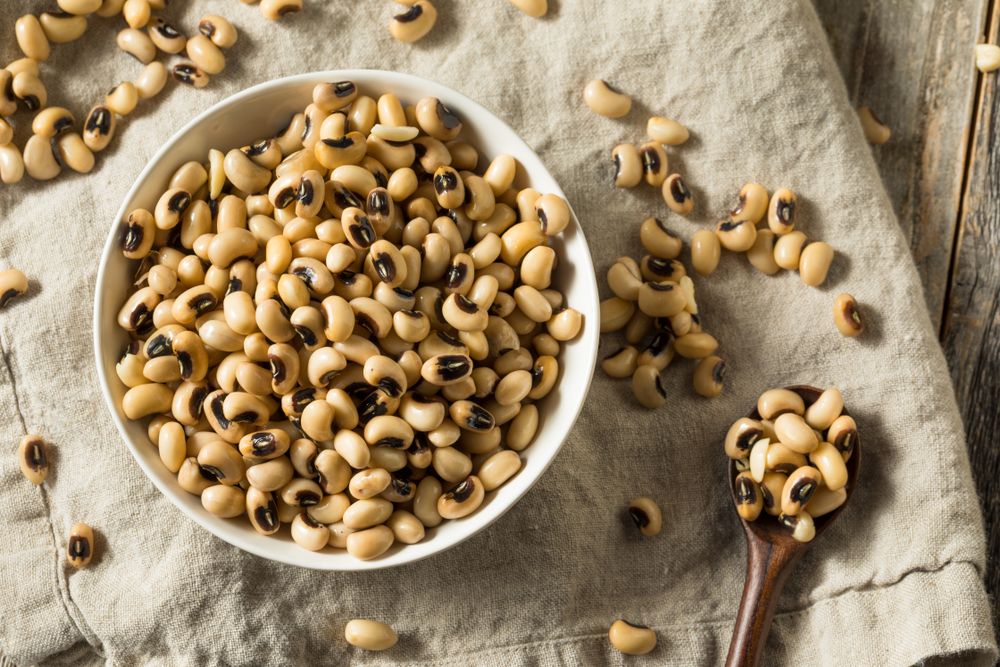
NUTRITION (PER 1/2 CUP):
- CALORIES: 80
- FAT: 0 g (Saturated Fat: 0 g)
- SODIUM: 290 mg
- CARBS: 14 g (Fiber: 4 g, Sugar: 2 g)
- PROTEIN: 5 g
What makes this high-protein superfood so super: Black-eyed peas boast a high protein content along with approximately 6 grams of dietary fiber and 3 grams of iron per cup, providing 26% and 16% of your Daily Value, respectively. Additionally, they are rich in magnesium, contributing to 21% of your Daily Value for this essential mineral.
How to enjoy this superfood: Incorporate black-eyed peas into your diet by preparing them in a hearty stew with smoky chicken sausage and flavorful spices. Serve alongside a medley of sautéed leafy greens such as collard greens and kale for a nutritious meal. Don't forget to add a dash of hot sauce for an extra kick!

